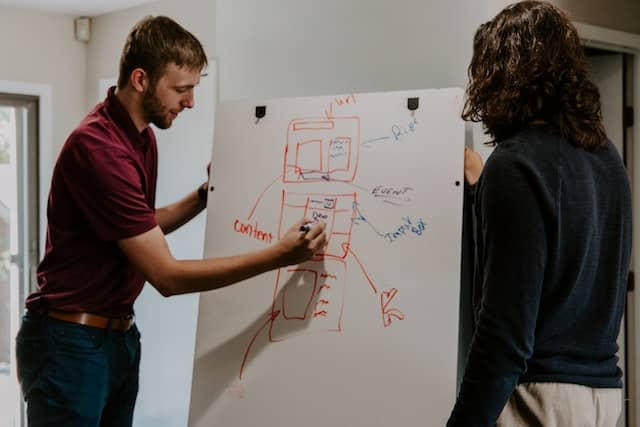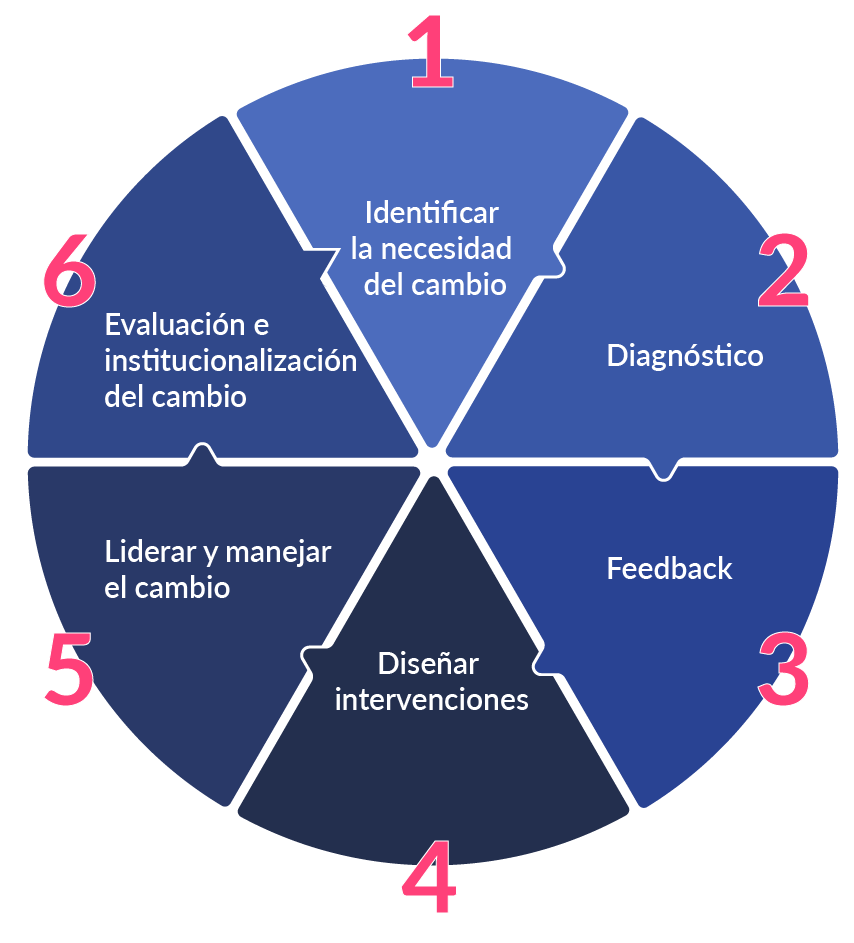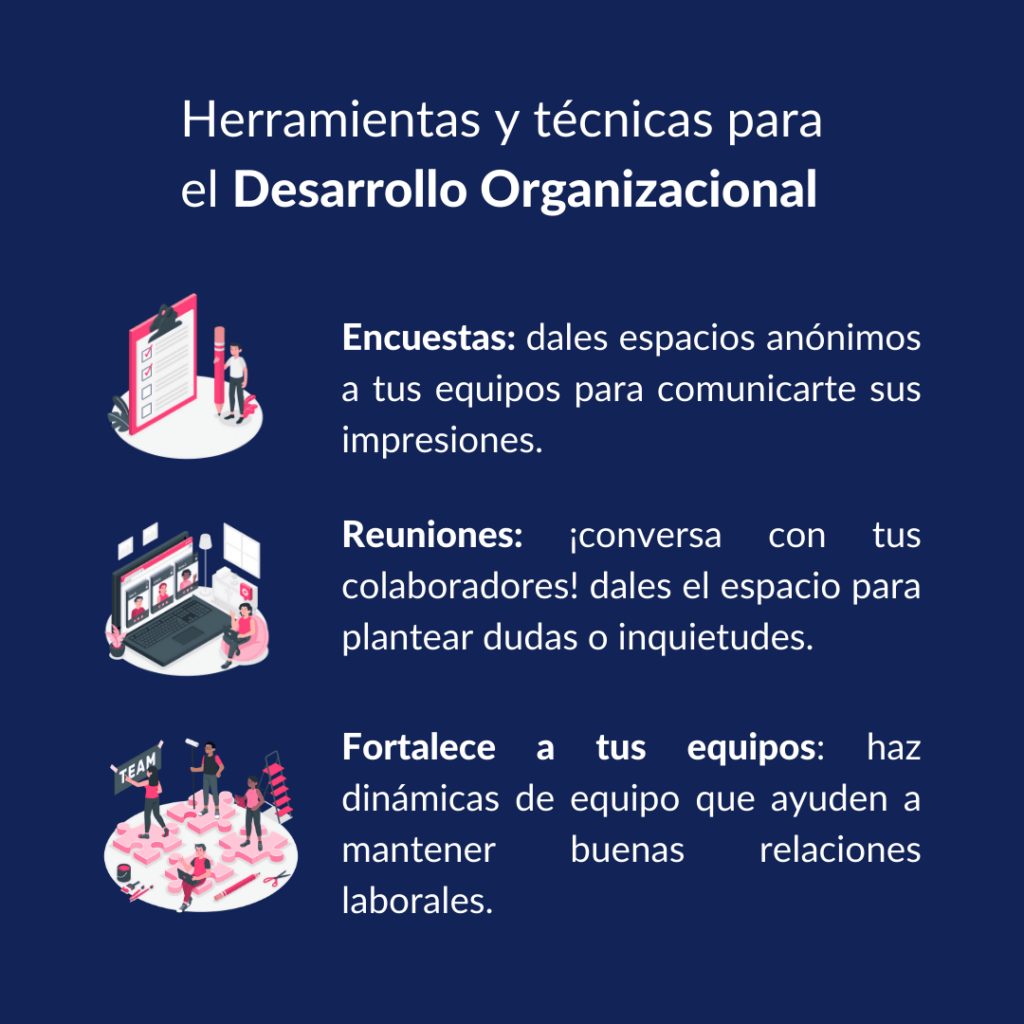What is Organizational Development and how to apply it

Have you heard about Organizational Development or “OD”? In case not, what Heraclitus said 2,500 years ago is a huge spoiler: “the only thing constant is change,” and that's what we'll talk about today. Organizational Development is the sum of actions that seek to optimize the operation of companies and increase their effectiveness through change. Change what? Well the truth is, whatever is necessary. Sometimes it will be processes, other times it will be resources, and in some it will even be the vision of the company.
However, do In a globalized world that is always changing, this is complex., since it is a constant fight against time. How then to apply improvement modifications to an industry that is more competitive every day? How to propose these changes to collaborators who already have a habit or routine? Keep reading this article to learn how to manage this very necessary process to increase competitiveness.
What is organizational development?
Organizational Development is the area in charge of generating the necessary structure to correctly manage change in organizations. This, through tools and processes designed by the People area to align human talent with the defined objectives. Along these lines, its purpose has not changed much over time. In 1969, Warren Bennis, a renowned consultant, described Organizational Development or OD, by his initials, in the following way:
“It is a response to change. A complex educational strategy whose purpose is to change the beliefs, attitudes, values and structures of organizations so that they can better adapt to new technologies, markets and challenges, as well as the dizzying pace of change itself.
Warren Bennis.
This is why fulfilling this purpose in a highly digitalized world is quite a challenge. Analyzing which tools can solve today's problems, without being outdated tomorrow or in a month, is not easy. This is why the Organizational Development strategy must respond to these needs, always looking to the future. By fulfilling this, The People area will manage to keep the organization current while being in charge of empowering collaborators. But how do you know what objectives to consider? Keep reading!
Organizational Development Objectives
The goals in your company can be many, however, the objective of Organizational Development is one: increase competitiveness. Along these lines, the actions you define must respond to that premise, but also to the business strategy. This means that you must implement strategies to increase the competitiveness of your company, considering its mission, vision and values.
That being said, here are some examples of goals focused on Organizational Development:
- Align the teams' objectives with that of the company.
- Integrate the personal and work lives of collaborators.
- Optimize communication channels.
- Strengthen the sense of belonging in the organization.
- Improve the work environment.
Now, how to make all this a reality? Below, we leave you 6 steps that you should take into account when implementing Organizational Development in your company according to AIHR:

6 key steps of the Organizational Development process

Identify the need for change
In both work and life, problems are essential to growth. This is why Organizational Development exists, since its objective in itself is to manage change: “Could this be better?”, “should this be different?” These questions are starting points for Organizational Development: Identify that there is a problem, and seek to improve it. Here it is not relevant how it will be solved, but rather internalizing that something must be modified. Now how do we continue? Keep reading.
Diagnosis
Diagnosis is the second step. At the beginning of any modification process, It is important to know what the starting point and context is. For this, tools such as interviews or surveys will be very useful to identify the current situation of the organization. Here you will find three “IPO” models. (initials for input or inputs, process or changes in this case, and output, which would be the final result) according to Cummings and Worley. These diagnostic models are: at the organizational, group and individual level.
Feedback
Feedback to the client is essential. Here it is important to have carried out a good treatment of the data extracted from the previous point. This is because delivering information to management in a clear, concise and action-oriented manner is key. It is important that decision makers have access to data that justifies the reasons for the changes to be implemented.. Tools like Excel For tasks of this type they are of great help.
Design interventions
Here comes the point of taking action. Designing an intervention is proposing the best possible process for the expected objectives, knowing the context of the company. Something much simpler after making a diagnosis, analyzing the data and giving feedback to management. Depending on what the organization is looking for, you can apply different types of interventions, such as human process interventions, techno-structural interventions, HR interventions or strategic change interventions.
Lead and manage change
Something very Important to consider is that there will always be resistance to change. This is why it becomes very relevant that, in this phase, the new guidelines adopted are motivated and, above all, the networks involved are supported. At this point, John Kotter's eight steps for change can help you:
- It gives a sense of urgency.
- Create groups that support you in pushing for change.
- Pose a vision that helps accept change.
- Communicate the vision of change.
- Empower your collaborators.
- Generate short-term objectives.
- Consolidate the improvements and change what does not align with the change.
- Institutionalize the change.
Evaluation and institutionalization of change
When the changes are made and are already applied in the organization, a measurement must be carried out. Evaluating whether what has been done has borne fruit in line with the initial objective is key to analyzing improvement options. In case it didn't work, don't worry, you can always start these steps again. Always keep in mind the words of Rafael Guizar:
“Organizational development is a mix of science and art, which makes it an exciting discipline.”
Rafael Guizar.
Tools and techniques in Organizational Development processes
At Ninja Excel we know that the Organizational Development process can sound complex. However, it is likely that without knowing it, you know many of the methods to do it. To demonstrate it, below we leave you 3 main tools in any Organizational Development process.
Surveys
Surveys are a key process for diagnosis in an organization. It is important that you ask the right questions to have information that is useful to you. To do this, ask the question thinking about the answer you will get and how you can work with the information you get.
Meetings
Something that will be very useful when leading and managing change. Keeping communication channels open will give your collaborators the freedom to raise their concerns. Remember that it is natural that there is fear or doubt in Organizational Development processes. Try to create fixed and group spaces to make them more dynamic, and thus obtain more relevant data.
Team strengthening
When driving changes, it is likely that not all employees will agree with them. For this, keeping a team mostly motivated and excited is vital. When a team dynamic is healthy, individual problems are addressed as a group. This will make some people's demotivation disappear as the group feels more secure.

Now that you have all the steps and key tips, do you dare to be the factor of change? Take your organization to the next level with Organizational Development. And remember, if you need a training partner, you can always get in touch with us.